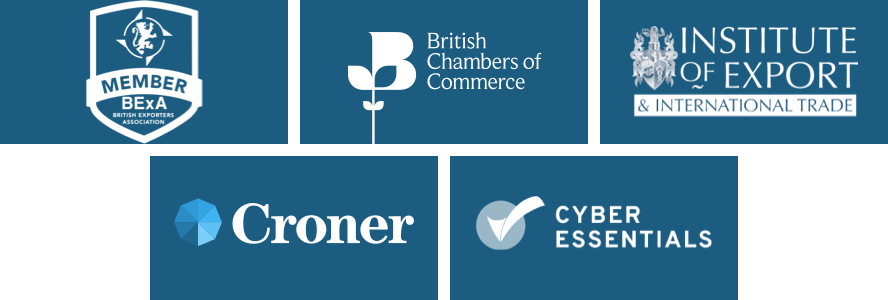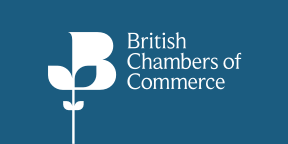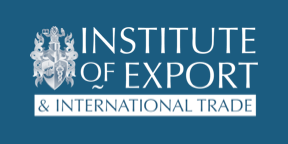BY:
SHARE:

There seems to be confusion about which agreements permit the use of an EUR1 form as a valid document - whether an EUR1 form received from a supplier is in the correct format (as it looks a bit different from others they have seen), whether originally signed forms must be obtained, and how long must an importer keep the originals for Customs purposes.
We have received many questions about EUR1 forms and their use under UK trade agreements. There seems to be confusion about which agreements permit the use of an EUR1 form as a valid document - whether an EUR1 form received from a supplier is in the correct format (as it looks a bit different from others they have seen), whether originally signed forms must be obtained, and how long must an importer keep the originals for Customs purposes.
As a brief introduction, the EUR1 form was a document introduced under EU trade agreements to confirm that goods shipped from a country met the rules of preference origin within the agreement. In other words, reduced and often zero import duty could be claimed against this document. Its actual title is a Movement Certificate (as it should move with the shipment of goods), which is also the title of preference documents, such as EUR-MED and ATR forms. Since exiting the EU in 2021, GB can no longer use ATR forms for trade with Turkey, but the EUR1 and EUR-MED rolled over into some UK trade agreements. This was for speed, and to ensure UK businesses could continue to operate preferential origin with countries/territories that had a trade agreement with the EU but hadn’t signed a new agreement with the UK. From January 2021, the UK introduced a UK version of the document, removing the European Union (or Community on older versions), and replacing it with the United Kingdom.
One of the main aims of the UK, when negotiating free trade agreements, is to reduce the need for paper forms, and so updated or new UK agreements tend to rely on the exporter holding a customs authorisation number of some kind, which is quoted within the official exporter statement of preference origin on a commercial document needed for the transport of goods, usually the invoice. NB: the agreement usually permits an exporter preference statement to be made on a commercial document for goods below a set value, usually around £5,700, without the authorisation number.
Agreements that are solely based on invoice declarations include the following:
- UK – EU Trade Cooperation Agreement with the exporter authorisation number being a Registered Exporter number (REX) from the EU, but a GB EORI for UK exporters.
- UK-Turkey Free Trade Agreement with the exporter authorisation number being an Approved Exporter authorisation (not a REX) from Turkey, but a GB EORI for UK exporters.
- UK-Canada Trade Continuity Agreement (currently under negotiation) with the exporter authorisation number being an exporter’s Business number for Canada but an Approved Exporter authorisation for UK exporters.
- And when they come into force, the UK-Australia and UK- New Zealand Agreements, with a declaration of origin on the commercial paperwork
Even agreements that require a paper EUR1 form usually include an option for exporter preference statements to be made by approved parties. There is nothing for it but to read the Origin Reference Documents and check what is permitted and what is not. And it can seem confusing.
Under the UK-Vietnam Agreement, an exporter preference statement on a commercial document is permitted, supported by a customs authorisation number (the Approved Exporter authorisation) for both Vietnam and UK exporters. Still, it also allows what is called a Certificate of Origin, which in Annex VIII is shown as a Movement Certificate, which needs a EUR1 number. But it isn’t an EUR.1 form. It looks like an EUR.1 form, and it acts like an EUR.1 form, but it is called a Certificate of Origin, to be used for preferential trade purposes. In fact, all EUR.1 forms acceptable under UK trade agreements are a certificate of preference origin. On the European Commission glossary of terms page, it does state: EUR. 1 Form: A certificate of origin applicable in some EU preferential trade arrangements.
So even the EU definition says “some” preferential trade arrangements. When a document like this is required and used, it must follow the official format, and the importer should ensure that the EUR.1 form is genuine. Regular checks must be made, but you shouldn’t use a form until it is verified as genuine. An importer could instruct an agent to do the checks, but the responsibility remains with the importing company. It must be signed and stamped by the competent authority in the exporters’ country/countries and be the original. It needs to be retained for a period of time (usually 4 years), though this may differ per agreement. Normally, rather than run different systems, it will be retained for the full 6 years required for import paperwork.
How do we check if it is genuine? Well, we have to examine the form. This is an extract from EU guidance that still applies in the UK:
It states that "the certificate shall have a printed green guilloche-pattern background, making any falsification by mechanical or chemical means apparent to the eye." …... The rules prescribe that the background shall be a green-guilloche pattern. However, they do not specify any particular template for the green-guilloche pattern background. Since the technical rules require that the form bears a green, guilloche-pattern background and that its aim is to help combat fraud, the focus should be on the presence, or absence, of the anti-falsification characteristic of the guilloche pattern and not the form/shape of the guilloche itself. ….. The anti-falsification characteristic of the guilloche pattern is paramount and this characteristic may result from a variety of patterns. Concretely, it is through the printed "guilloche", with or without wavy green lines, with or without interlaced ribbons, that invisible changes, after the issue of the certificate, are made impossible. And given this, the pattern can be considered as an anti-fraud feature. As soon as the certificate meets the criteria, namely that the pattern must be such as to make "any falsification by mechanical or chemical means apparent to the eye", then it is compliant. There is no mandatory type of guilloche to be respected, provided the pattern can be considered as an anti-fraud feature. Nevertheless, when the green-guilloche pattern background of the certificate contains a name or logo, it should be rejected. A white logo in the centre would indeed allow a number/digit or a letter to be changed without this being apparent to the eye.
Suppose customs authorities audit the use of preference at import. In that case, they will visit the importer, not the agent, so if a company relies on agents to hold the original paperwork on their behalf, it is important that there is an agreement in place that covers the retention of these forms and that they can be found quickly when audited. It’s also important to ensure that these documents are surrendered to the importer for safekeeping if the agent ceases to act on the company’s behalf. Perhaps we should be very pleased that the UK aims to move away from using paper-based evidence.
While you are here you may be interested in some Strong & Herd LLP training courses & live clinics related to this topic:
OneCall™ Email assistance as and when required; A one-call solution for all your import, export and customs enquiries. Export help. Import help. Customs help.
Stay informed about customs and international trade matters by subscribing to our OneCall™ service. This comprehensive offering includes a dedicated email helpline for support, timely practical updates direct to your inbox (Did You Know?), monthly UK Customs & Trade Briefings and access to an interactive members' area with an exclusive community for our subscribers.
International Trade Updates & Spotlight Newsletter
Subscribe to our free information emails covering international trade topics...
MORE INDUSTRY INSIGHTS...











